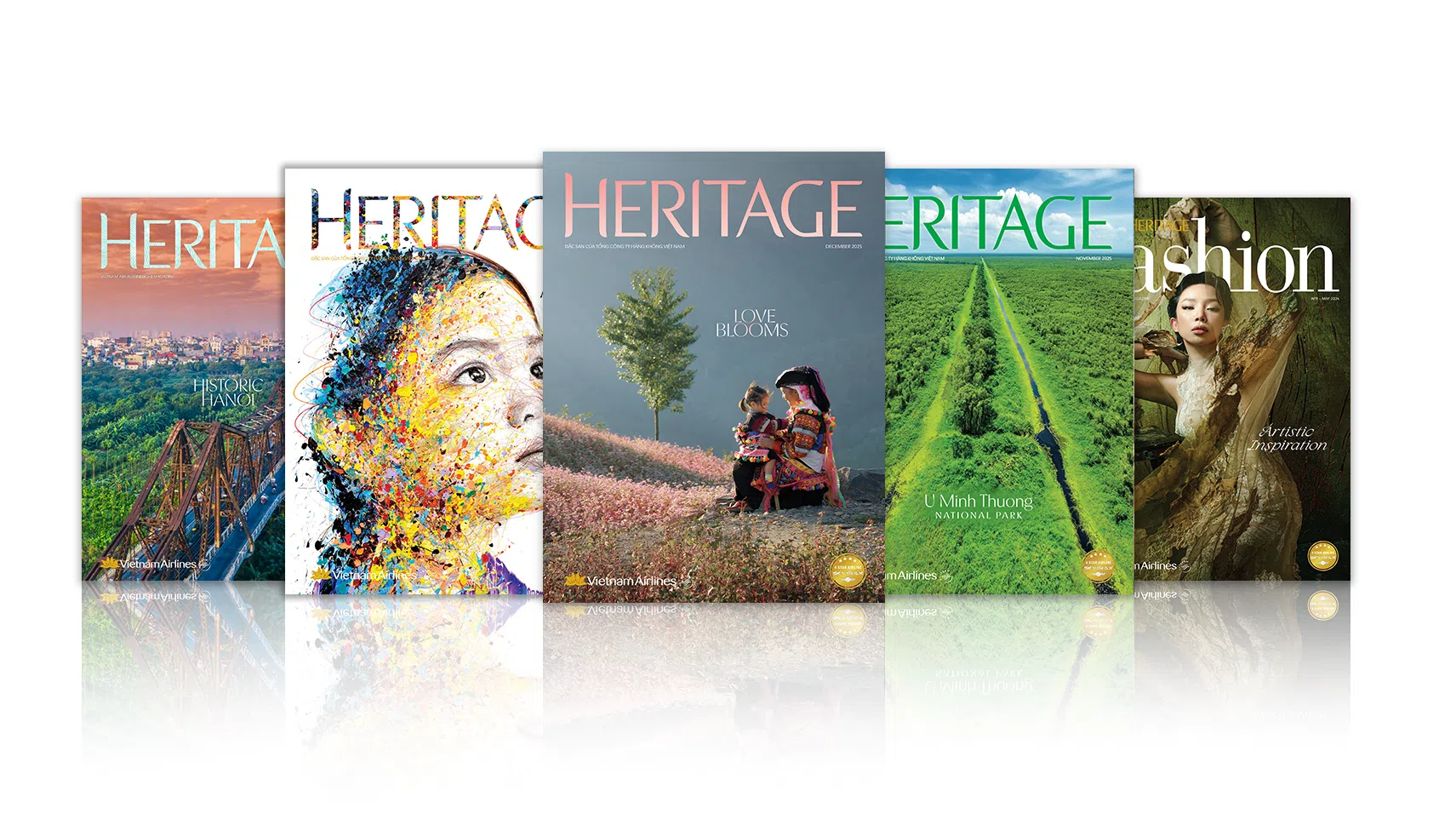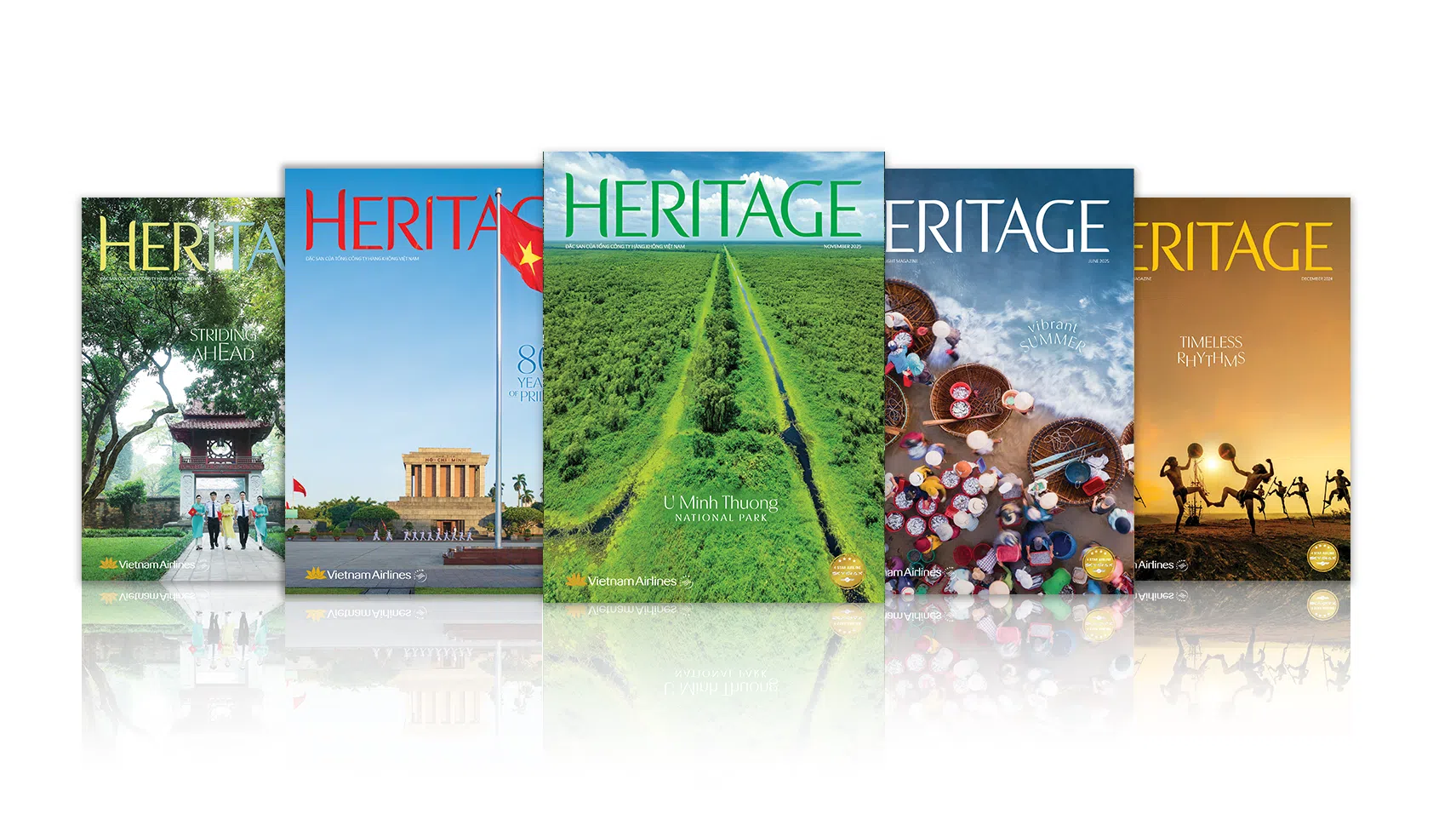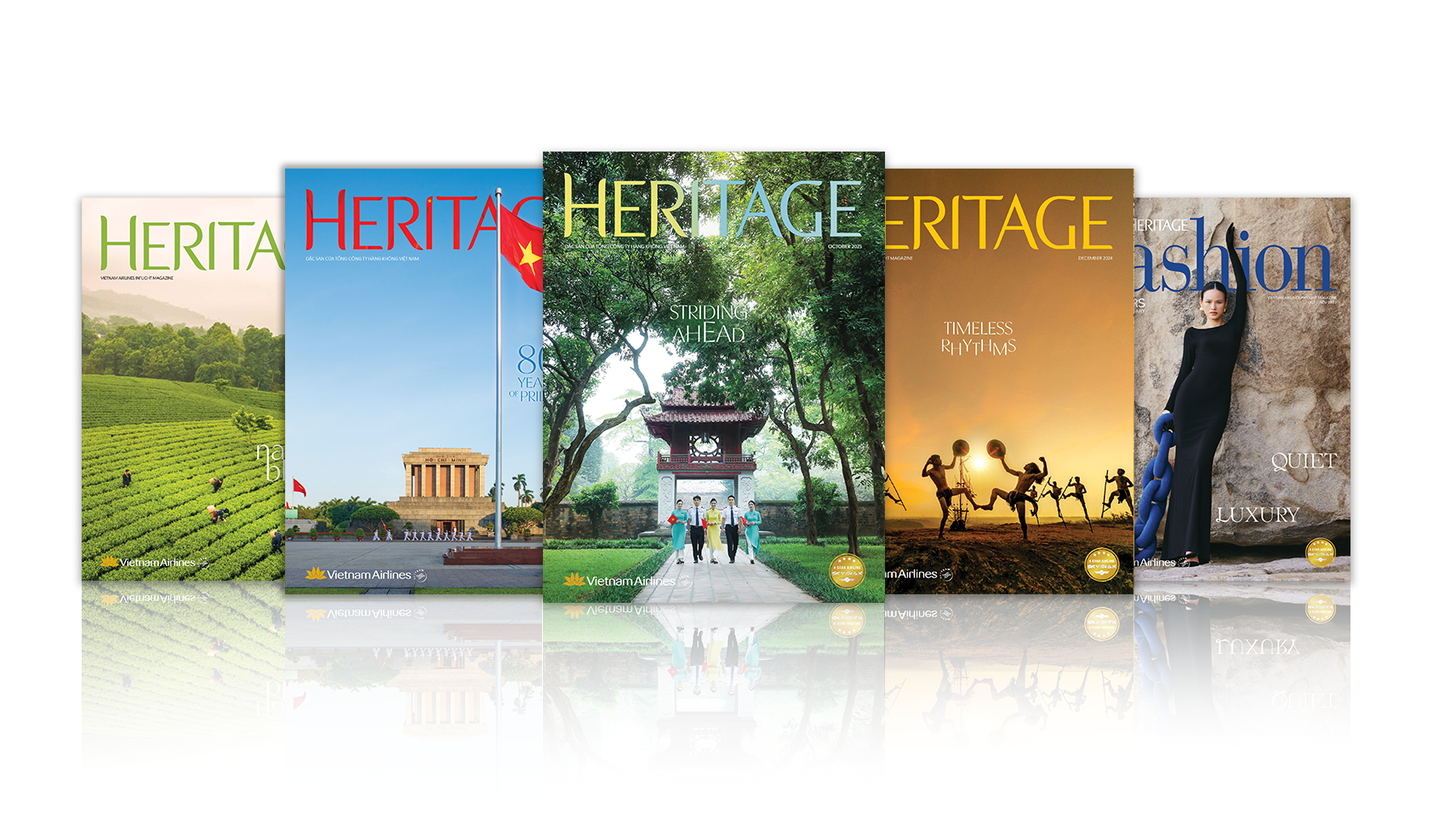Story PHUONG UYEN, TUAN MINH
Photos INTERVIEWEES
Maximalism and minimalism – two seemingly opposing schools of design – now meet at a spiritual intersection, where art and culture blend together. This opens up a multidimensional dialogue among three designers – different in generation and ego, yet united by a single goal: using the language of fashion to reconstruct creative thinking and preserve the cultural identity of Vietnam.
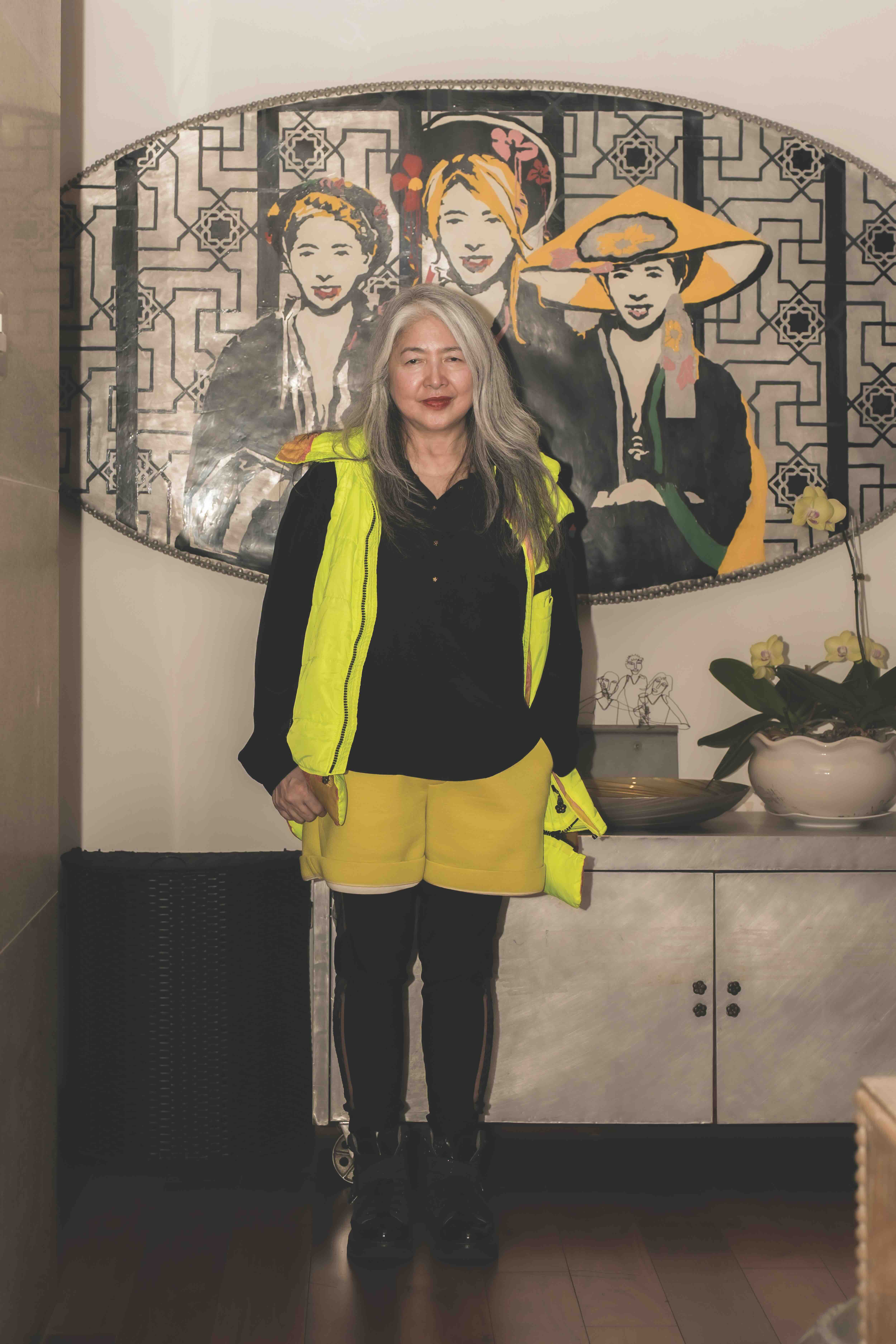
Designer Mai Lam
“I always live in my own imagination – a world I long to realize”, begins designer Mai Lam when talking about her creative journey. Yet her story cannot be confined to the title of “designer”; rather, she embodies an artist wholly immersed in the multifaceted world she has built for herself.
“It was the moment I caught the moonlight filtering through thick mist, casting shadows on the tender branches in Da Lat”, she describes a piece placed at her home’s entrance. For Mai Lam, the world of art is formed from such moments – dreamy, private, yet deeply real. She immerses herself in that world, where countless ideas are nurtured. “Everything I do feels natural. For me, creativity is a combination of imagination, observation, and reality”.
When working on a feature about the two design schools of “minimalism” and “maximalism,” we did not impose any framework, but simply sought to capture the true spirit of each character. That led to the question: “At what moment did you realize your design language leans toward ‘maximalism’?” She replied: “I have my own world, where everything can become art, without reason and without boundaries”.
Her creative sensibility is so multidimensional and free-spirited that, even without any formal fashion training or preliminary sketches, she can create a multitude of designs in a short time. “I find that drawing keeps changing, so I’d rather spend time making and feeling directly”, she adds. Sometimes she brushes the back of brocade fabric with a wire brush to create 3D texture; other times, she dyes fabric with coffee and tea to achieve deep tones. Thus, even though her designs may be densely detailed, her creative process is extremely streamlined, with just two steps: “think and do”. For her, “maximalism” is the right balance to express what she wants to say. “The wearer must feel the material melt into their skin, blending with their body”. This seemingly simple comfort is the aesthetic philosophy she pursues: “Beauty is not far away, but very close, in every seam, every sensation when you put on a garment”, she says.
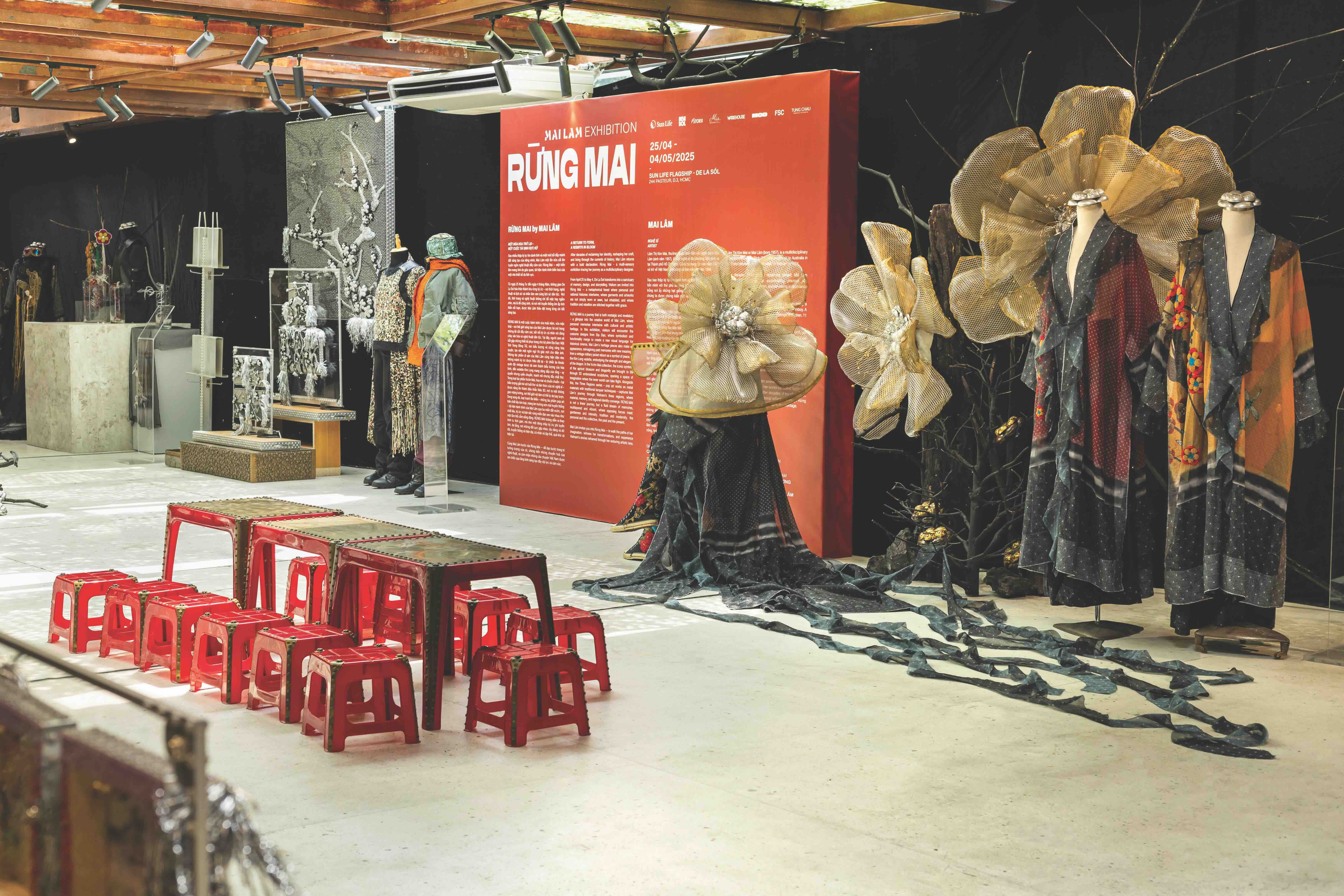
When asked how she conveys her ideas, she laughs: “Maybe it’s ‘innate’. I just explore what already exists around Vietnam. Some things are very rustic, but when brought into design, they somehow become magical”. For Mai Lam, ideas are pre-arranged in her mind, like a ready-made map – what is the main material, what is a detail, which part to cut, which to embroider… everything appears clearly whenever she creates. She jokes: “I’m lucky, whatever I touch just takes shape”. Even when a product is flawed, she doesn’t discard it, but gives it a new life. Perhaps this mindset is what brings flexibility to Mai Lam’s style. For her, fashion is not a fixed mold, but a free dialogue between things that seem irreconcilable.
“I have my own world, where everything can become art, without reason and without boundaries”
Her design language goes beyond pure beauty, always carrying memories of the turbulent changes in Vietnam’s history and society. For example, her recent collection Rung Mai was inspired by her work on costumes for the film Dia Dao (Tunnel). Those film scenes quietly evoked memories of her father migrating south during the Dien Bien era, and her cousin who sacrificed his life in the war. Instead of hiding her sorrow, she weaves it into layers of fabric tinged with the color of time. Culture is also the deepest layer of language in Mai Lam’s designs. She distills and preserves the soul, then combines it with modern techniques to reach today’s generation, because for her, it is not just an artistic game, but a journey of preserving memories through fashion.
“And what about the personal life of Mai Lam?” – “I let everything flow, but still observe, make use of, and balance things. I try to create a tidy, cozy space suitable for all family members. That is the true home we always want to return to”.

Creative director, designer Cuong Dam
The inner world of Cuong Dam always echoes with the collisions between the two extremes of Minimalism and Maximalism. Looking at those intersections, he believes that things are no longer strictly right or wrong, sufficient or lacking; they are necessary carvings for us to understand the complexity of life more deeply.
For Cuong Dam, fashion is a touchpoint that allows him to feel the vibrancy between restraint and expression, between closure and openness. At the crossroads of these opposing schools, he chooses to be honest with his emotions and worldview, harmonizing both elements with a persistent belief: “Minimalism helps me stay clear-headed amid chaos, while maximalism keeps my life from becoming dull”.
It is easy to recognize a special “stillness” in Cuong’s creations – as if every cut and fold is considered like sculpting a block of stone. In fashion – where movement is essential, this stillness does not make the wearer stand still, but invites them to pause and listen. He designs like someone meditating, completely focused on balancing art and utility, between self and audience. When every element is restrained at the right moment, a calm beauty naturally emerges without ostentation.
In Cuong Dam’s philosophical space, minimalism is not about elimination, but a journey of acceptance and harmony – where every extreme has its place. Like entering PARAMOUNT – a sanctuary of the self-one no longer sees the world through the dualistic lens of right and wrong, but with a holistic view that embraces all inner contradictions. Cuong Dam designs with a deep intuition that “minimalism” must be nurtured from “maximalism”, from layers of emotion, memory, and ego. Clean cuts do not erase complexity, but cherish it through restraint.
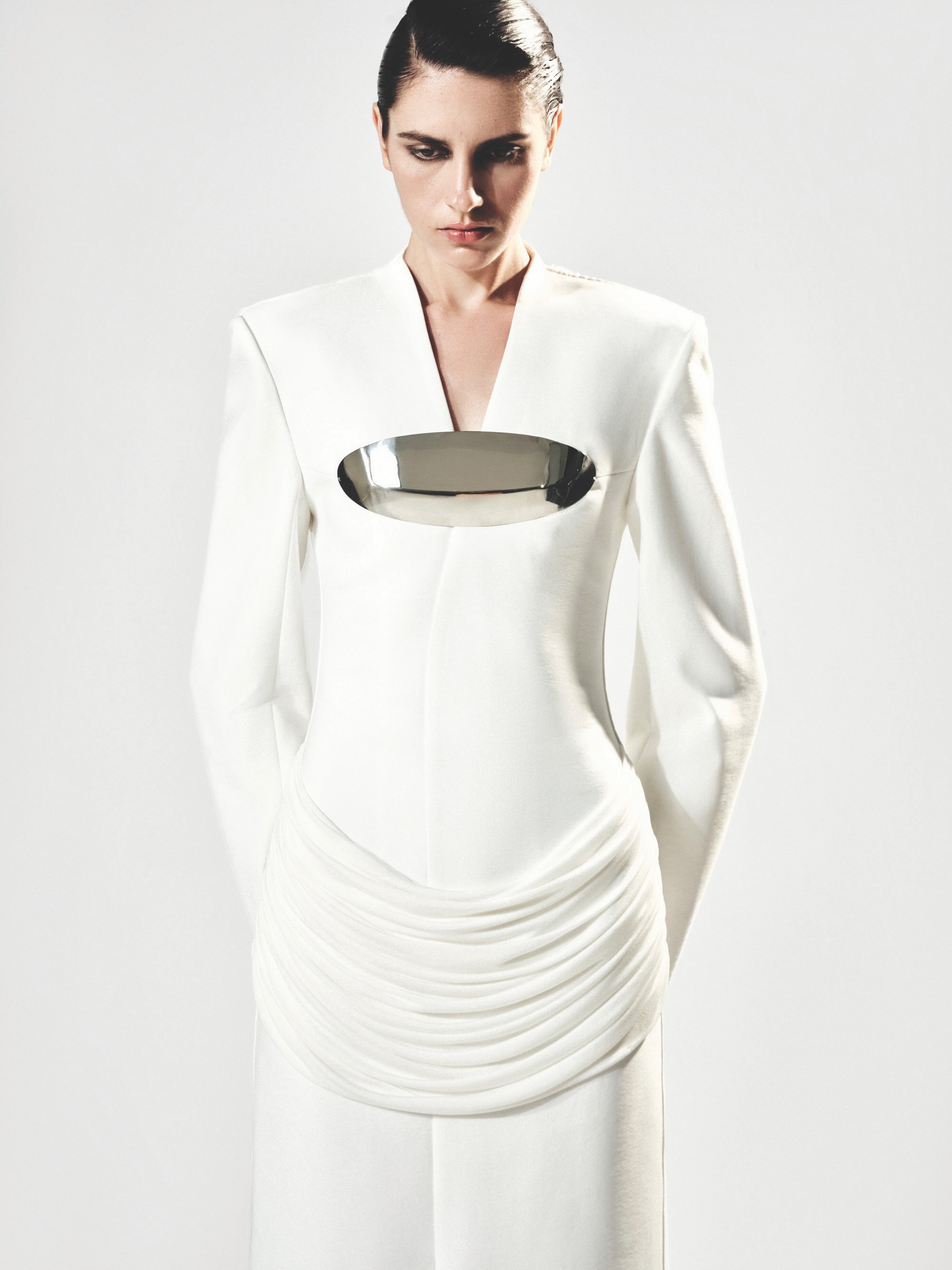
Minimalism, in his hands, is no longer just a style but becomes a method of healing – where every fold, every blank space in the material contains a sigh that has been soothed. These designs are not cold, but meditative. Light is filtered through each layer of fabric, and the body returns to a tranquil state; as if each outfit is an inner space constructed – minimal in form, maximal in depth. Cuong Dam opens up a new perspective on beauty: it is the beauty of reconciliation. When fashion is no longer a mask, but a mirror – where one meets oneself, whole and without judgment.
What is special about Cuong Dam is also how he brings culture into fashion. Not by directly recounting the past, but by “condensing” that cultural spirit into a symbol, an emotion. For him, reduction is cutting away. But condensation is retaining – like the essential oil of memory. It could be a silhouette reminiscent of traditional attire, or materials echoing the North with lacquer and gold leaf; all are distilled just enough to create identity, but not make viewers feel lost in modernity.
Cuong Dam does not claim to belong to any specific “school”. But through each collection, one can see a gradually forming aspiration – a unique path called “Minimal for the Maximal”. There, minimalism is not the destination, but the means to explore something more important: depth of thought. He does not choose to shout in the crowd, but quietly stands – steady, distinct, enough to make people turn and look. Perhaps, in an era where everyone tries to “say more”, silence – if refined enough, is the most profound declaration.
“Minimalism helps me stay clear-headed amid chaos, while maximalism keeps my life from becoming dull”
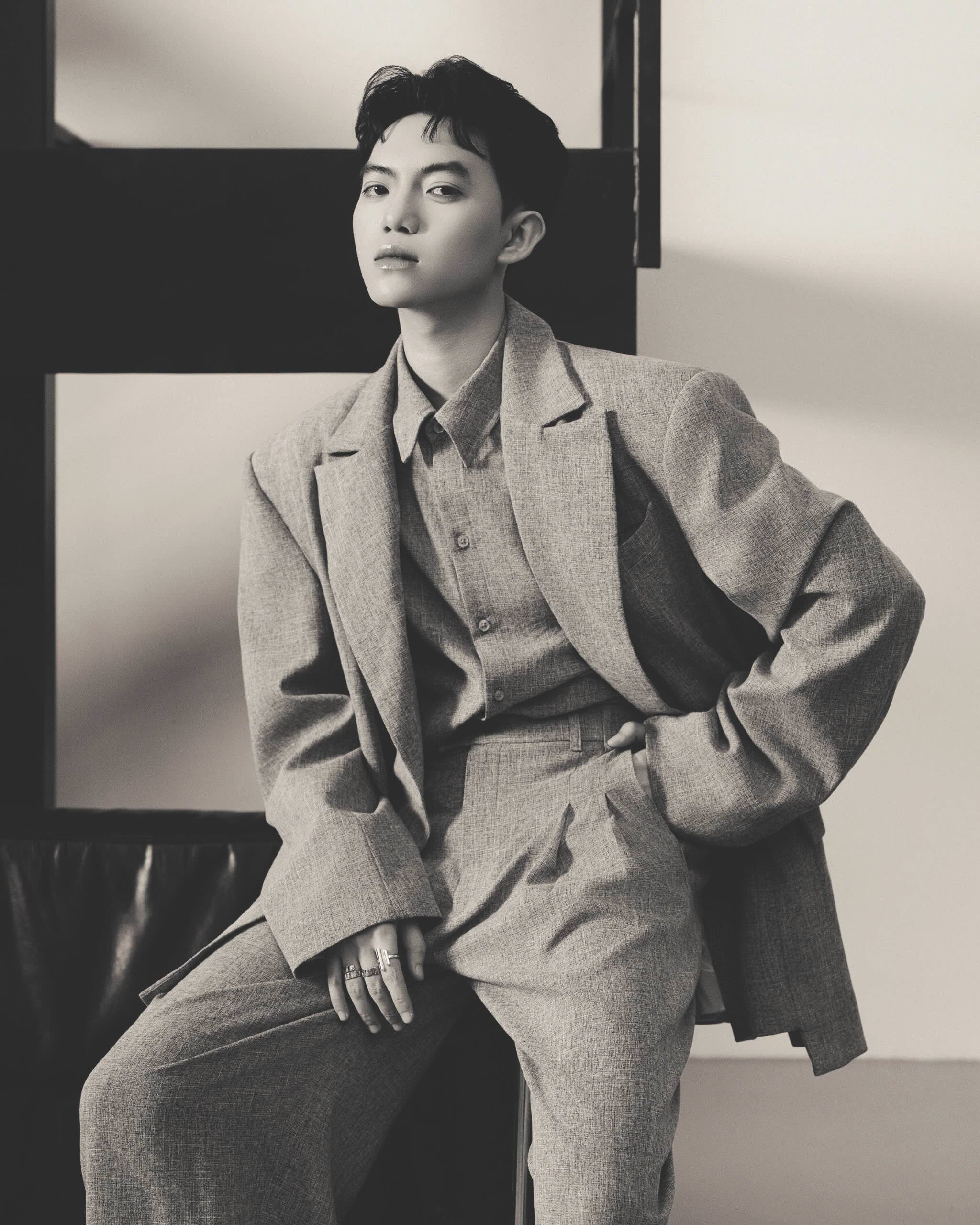
Designer Phan Dang Hoang
In the creative world of Phan Dang Hoang, fashion is no longer a place to draw rigid boundaries between schools of thought, but a land of convergence – where opposites like minimalism and maximalism do not confront each other, but instead coexist, interact, and complement one another in every cut and every layer of fabric. He does not choose to stand on any one side absolutely, but instead crafts a visual journey where restraint meets freedom, where rustic tradition is woven into a contemporary form, tinged with a breath of international spirit.
Born into a family with a tradition in painting, Hoang grew up surrounded by layers of color and emotional depth. Names like Le Pho, Le Thi Luu, Nguyen Phan Chanh, or the humble do paper itself, have nurtured in him a persistent aesthetic sensitivity. But instead of repeating the past as pure reverence, Hoang chooses to “distill memory”, filtering the spirit of tradition and then placing it into contemporary, personal forms.
From this perspective, minimalism and maximalism cease to be two poles of choice, but become two coexisting methods of expression in his design philosophy. Simplicity, for Hoang, is the result of an extremely complex and sophisticated process. To create a minimalist design, the designer cannot be simple-minded; on the contrary, it requires perfectionism in every stitch, every structure, and the overall rhythm. Minimalism, in Hoang’s eyes, is a way of maximizing thought and optimizing the message.
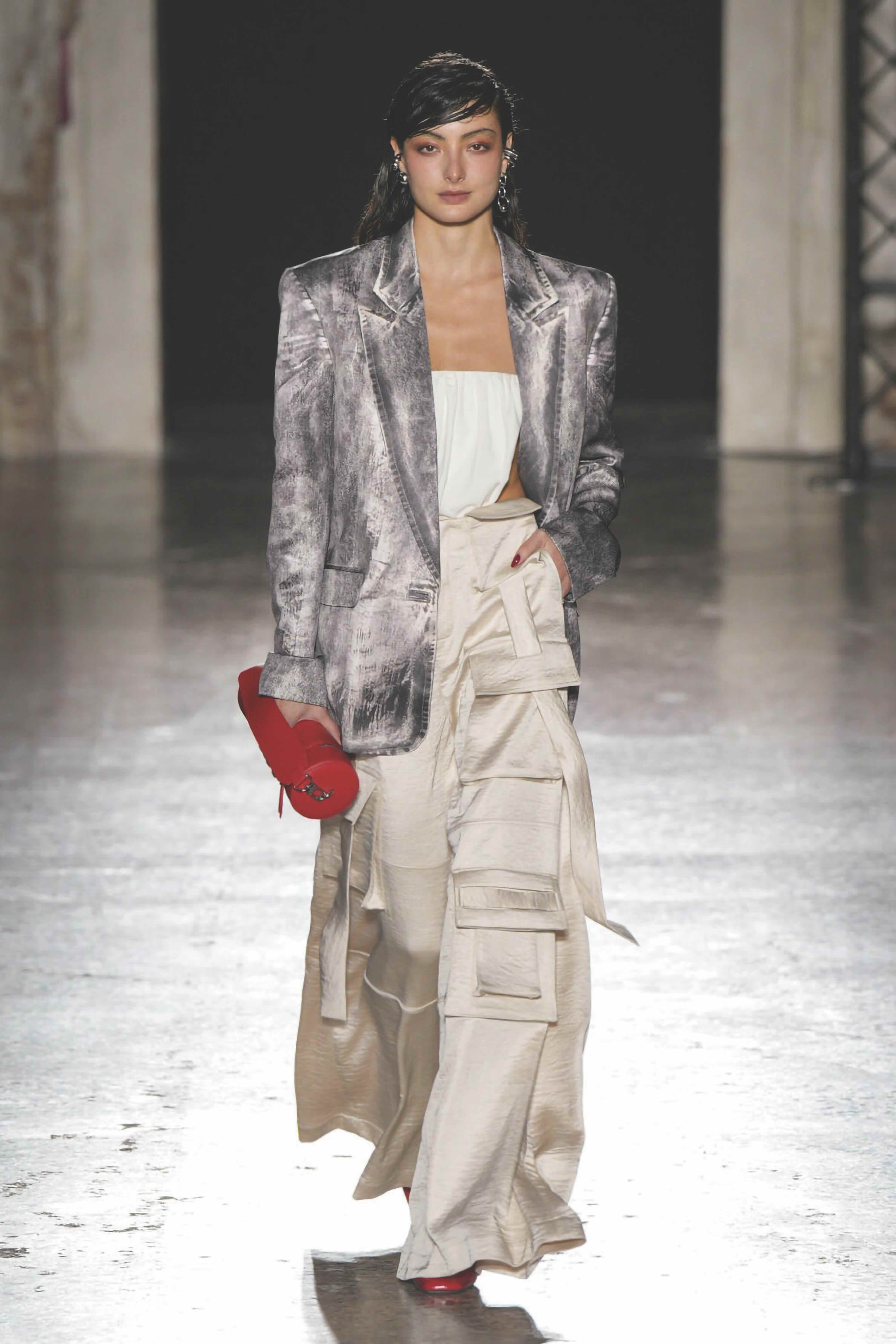
This spirit is clearly shown in his handling of materials; he constantly seeks out fabrics that are not only expressive but also rich in cultural depth. From muslin silk, ramie silk, chiffon, bamboo, to denim and leather – each material is its own “language”, helping to reimagine the beauty of Vietnamese tradition through a modern lens. The rusticity of muslin silk evokes the fibers of dó paper, the transparency of chiffon resembles a thin veil of mist over silk paintings, while the strength of denim and leather creates a bold dialogue with the fragility of ancient ceramics. Through meticulous technique and the ability to listen to the materials, Hoang tells stories not only with form, but also with tactile surfaces, light, and the resonances of culture. Each design is a structure of intersection – where the local spirit is distilled through the global language.
On the other hand, “maximalism” – with its density of details, materials, and symbols – does not equate to ostentation or visual overload. It must be “orchestrated”, just as Hoang constructs the image of women in his designs: multidimensional, sensitive, rich in symbolism but never chaotic. Images of his grandmother, mother, and the women around him – both as roots and as inspiration – emerge in each collection as a silent yet profound tribute.
This sense of balance is not only an aesthetic choice, but also a design identity. It arises from Hoang himself – a creative personality who values meticulousness and respects values cultivated over time, but is also unafraid to experiment, expand, and break formal limits. Each collection, as he shares, is its own “universe”, where seemingly contradictory elements are arranged in harmony and with intention.
In the flow of modern fashion – where boundaries are increasingly blurred – the choice to harmonize “less” and “more” is not a compromise, but an expression of flexible thinking, attentive to the times while still preserving one’s roots. Hoang does not define himself within a specific school; he chooses to be a storyteller – narrating either through the quiet of a refined detail or the resonance of a sophisticated structure, always aiming to deliver a message to the hearts of his audience.
If he were to be transformed into an object, Hoang would choose the image of a chair – a seemingly simple item, yet foundational for all interaction, for rest, and for creativity. And like that very chair, Phan Dang Hoang does not seek to impress with flamboyance, but with a presence that is whole, steady, versatile, and always embraces both rusticity and boldness within a single form.
“Minimalism does not take away from opulence; it is the reduction of unnecessary detail based on careful calculation. For hoang, that calculation is maximal”







